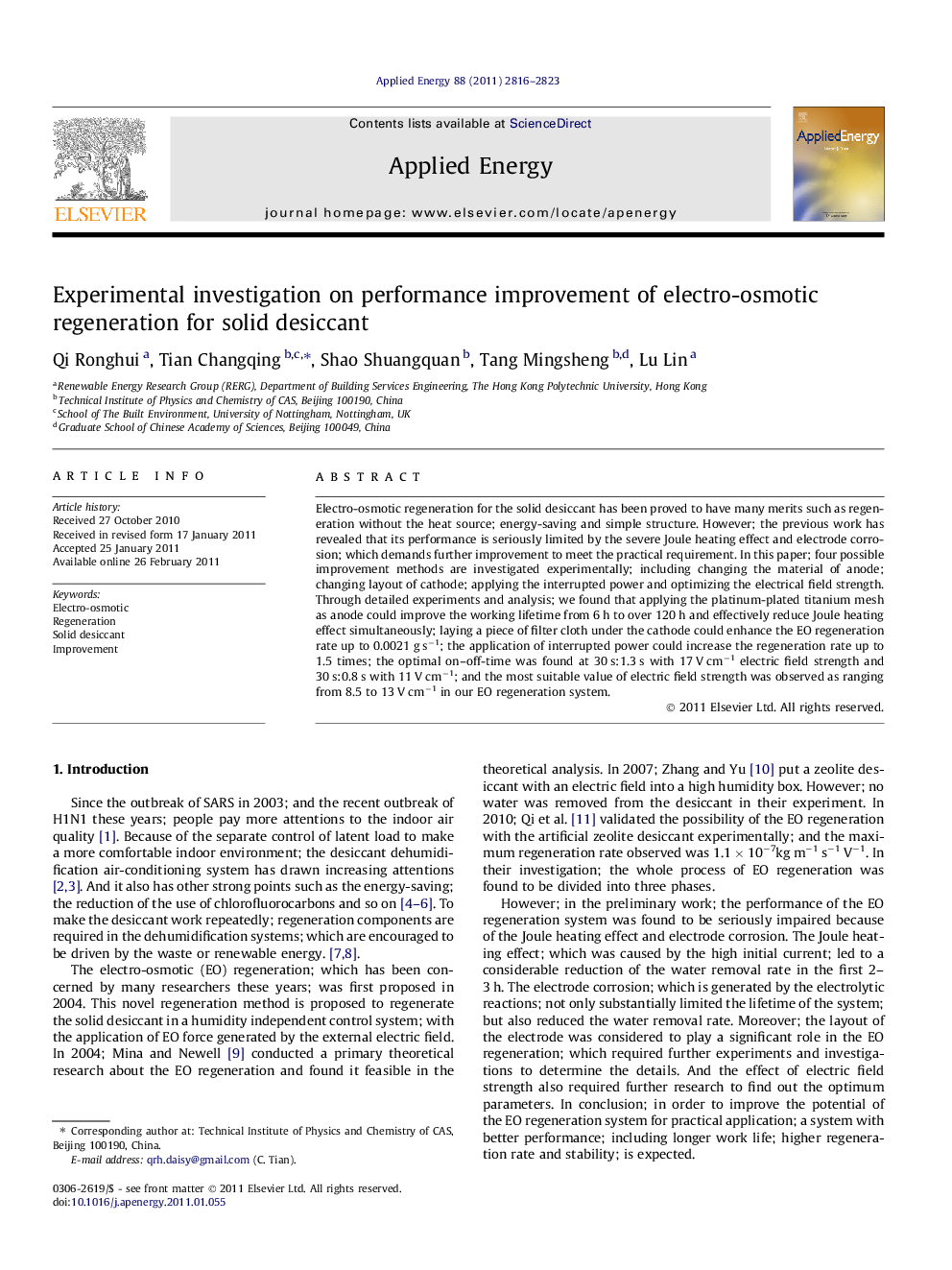| Article ID | Journal | Published Year | Pages | File Type |
|---|---|---|---|---|
| 243826 | Applied Energy | 2011 | 8 Pages |
Electro-osmotic regeneration for the solid desiccant has been proved to have many merits such as regeneration without the heat source; energy-saving and simple structure. However; the previous work has revealed that its performance is seriously limited by the severe Joule heating effect and electrode corrosion; which demands further improvement to meet the practical requirement. In this paper; four possible improvement methods are investigated experimentally; including changing the material of anode; changing layout of cathode; applying the interrupted power and optimizing the electrical field strength. Through detailed experiments and analysis; we found that applying the platinum-plated titanium mesh as anode could improve the working lifetime from 6 h to over 120 h and effectively reduce Joule heating effect simultaneously; laying a piece of filter cloth under the cathode could enhance the EO regeneration rate up to 0.0021 g s−1; the application of interrupted power could increase the regeneration rate up to 1.5 times; the optimal on–off-time was found at 30 s:1.3 s with 17 V cm−1 electric field strength and 30 s:0.8 s with 11 V cm−1; and the most suitable value of electric field strength was observed as ranging from 8.5 to 13 V cm−1 in our EO regeneration system.
Research highlights▸ We investigated four measures to enhance the electro-osmotic regeneration system. ▸ The use of platinum-plated titanium anode effectively improved the work lifetime. ▸ Application of filter cloth could significantly enhance the regeneration rate. ▸ The interrupted power was found to enhance the regeneration rate up to 1.5 times. ▸ Optimal electric field strength ranges from 8.5 to 13 Vcm−1 in regeneration system.
